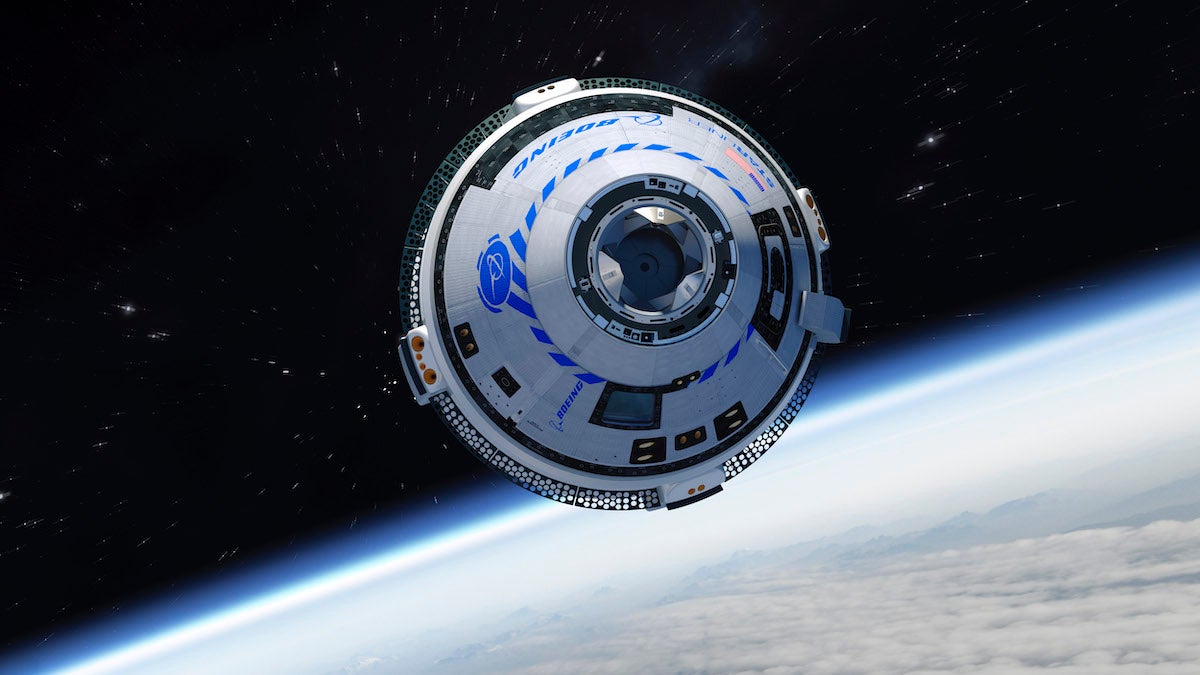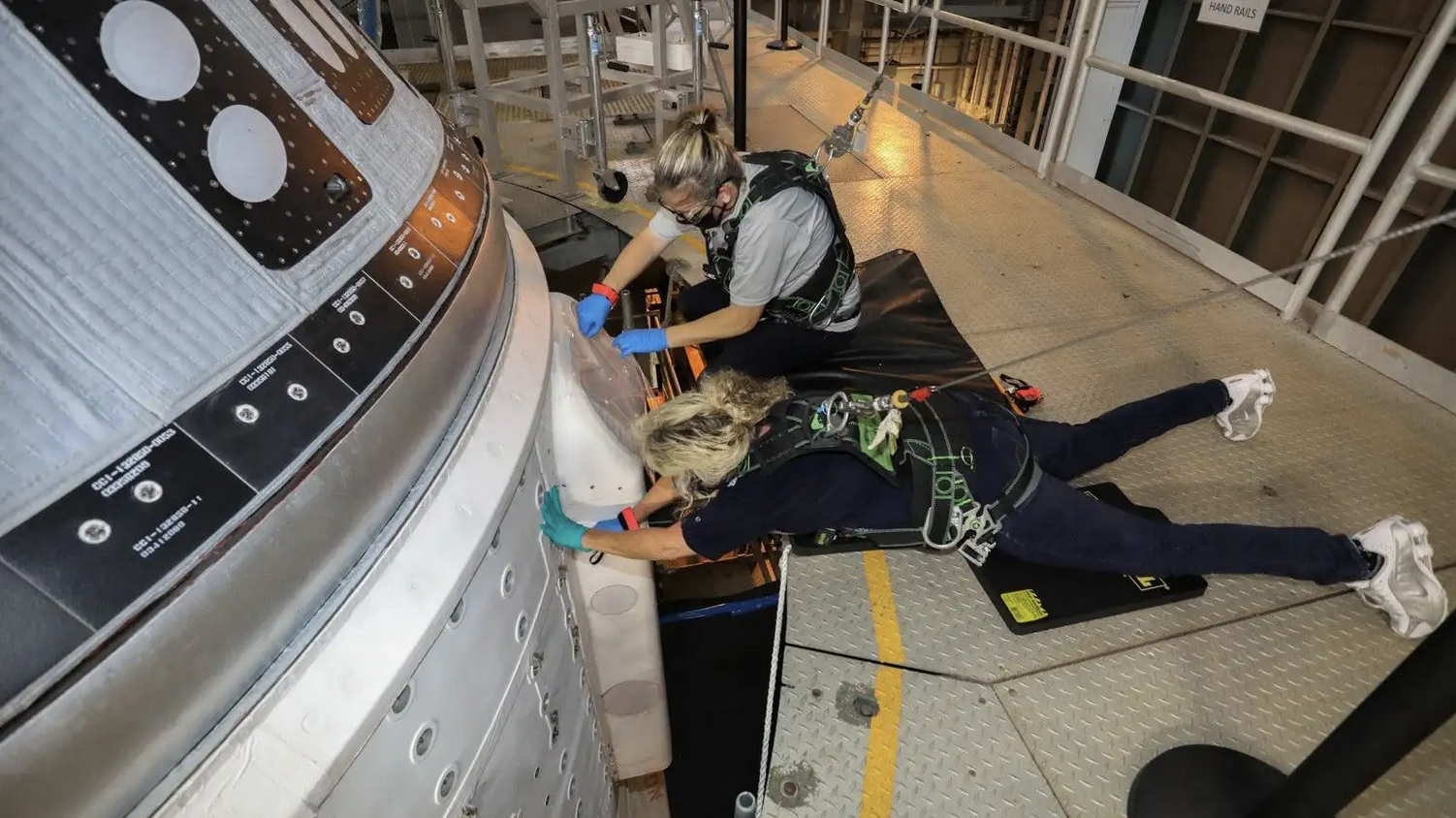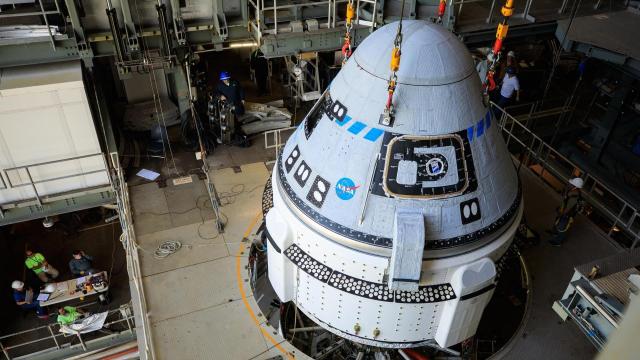Hard to believe, but it’s been nearly two and a half years since Boeing’s first botched test of its Starliner CST-100 spacecraft. Yep, it’s been a minute, so here’s a recap of the past 28 tumultuous months, and how Boeing might finally make good on providing a viable commercial crew vehicle for NASA.
The two previous tests, one in 2019 (Orbital Flight Test-1) and the other last year (Orbital Flight Test-2), did not go well, to say the least. In the first test, the capsule made it to orbit but then glitched and never reached the space station. In the second, stuck valves kept Starliner on the ground. Boeing is developing this capsule under a $US4.3 ($6) billion contract as part of NASA’s Commercial Crew Program, but it has fallen badly behind schedule. The pressure’s now seriously on.
In preparation for this second attempt at OFT-2, the Starliner capsule is currently sitting atop a United Launch Alliance Atlas V rocket, which is scheduled to launch from Space Launch Complex-41 at Cape Canaveral Space Force Station at 6:54 p.m. EDT on Thursday, May 19. Should all go as planned, the uncrewed CST-100 will dock at the International Space Station on Friday, May 20 at 7:10 p.m. EDT. Starliner OFT-2 is packed with around 227 kg of cargo (mostly food), and the plan is to return 272 kg of cargo back to Earth.

Recent precedent being what it is, this itinerary is hardly a certainty. The problems that have plagued this program have run the gamut, from hardware glitches and software anomalies through to shoddy processes and organizational deficiencies. Boeing’s shortcomings as a NASA partner have been on full display over the past several years and amplified by the accomplishments at SpaceX, NASA’s other commercial crew partner. Elon Musk’s Crew Dragon has been shuttling astronauts to the ISS and returning them home for two years now.
The launch of Boeing’s OFT-1 mission on December 20, 2019 was an early sign that things weren’t quite right. The capsule managed to reach space, but a software automation glitch caused the spacecraft to burn excess fuel, preventing it from reaching its target — the ISS. A subsequent investigation implicated a faulty Mission Elapsed Timer, which caused timings on Starliner and the rocket to go out of sync. Starliner miscalculated its location in space as a result, triggering the unfortunate fuel burn. Investigators also uncovered a coding error that could’ve led to an unsafe service module separation sequence. As if that weren’t enough, space-to-ground communications were unexpectedly lost during the OFT-1 test.
The botched test led an independent NASA-Boeing review team to issue 80 recommendations to Boeing, a lengthy to-do list that included improved testing and modelling, new development requirements, software updates, organizational changes, and operations tweaks. The ensuing effort to address these recommendations resulted in a 1.5-year delay to the Starliner program.
By August 3, 2021, Boeing was ready to perform the second test of Starliner, the OFT-2 mission, but the Atlas V rocket never left the launch pad owing to “unexpected valve position indications” in the capsule’s propulsion system. During the countdown, 13 of 24 oxidizer valves, which “connect to thrusters that enable abort and in-orbit manoeuvring,” got stuck in the closed position, forcing the team to abort the launch and return the capsule to the Vertical Integration Facility for closer inspection.

Engineers later determined that moisture somehow got onto the dry side of the oxidation valves, causing nitric acid to form, and that friction from the ensuing corrosion caused the valves to get stuck. Engineers blamed the humid Florida air for this unwanted moisture.
At a media teleconference on May 3, Steve Stich, manager for NASA’s Commercial Crew Program, said the issue “has been closed out” and that OFT-2 is once again ready to proceed. “It’s been a hard eight months, I would say, but very fulfilling in that we’ve resolved the problem with the oxidizer isolation valve,” he said.
Michelle Parker, vice president and deputy general manager for Space and Launch at Boeing, told reporters that the “spacecraft looks great” and it’s “performing great.” Boeing engineers were able to narrow down the root cause and implement measures to prevent a repeat, she explained. Parker said the team chose not to redesign the valves but instead added sealant and other components to keep moisture away. By “sealing the ambient moisture path,” she said, the team is hoping to avoid a recurrence. “If you eliminate moisture from the valve, you eliminate the [chemical] reaction,” she said. The ground team is now cycling the valves every couple of days to ensure functionality, Parker added.
When asked if another failed test would trigger the end of the NASA-Boeing commercial crew contract, Joel Montalbano, manager of NASA’s ISS program, said the space agency will continue to work with Boeing on the project and that no intention exists to stop now. “I suspect that we’ll learn from the test flight,” and then “go fly the crewed flight and then fly the post-certification missions,” he told reporters.
Indeed, a successful OFT-2 mission would set the stage for OFT-3 — a crewed Starliner mission to the ISS. “We understand that we’re going to learn a lot from OFT-2, and that will dictate the schedule moving forward, but we have a target [to launch a crewed mission] at the end of this year,” Mark Nappi, Boeing program manager for the CST-100 Starliner mission, said at the May 3 press conference.
The issue with the valves, it would appear, is not over. Boeing is currently mulling the possibility of redesigning the propulsion valves. “A valve redesign is definitely on the table,” Nappi told reporters this past Wednesday. “Once we get all the information that we need, we’ll make that decision.” And as reported in Reuters, Boeing and Aerojet Rocketdyne are currently squabbling over who’s to blame for the faulty valves. Aerojet Rocketdyne and its lawyers are claiming that a cleaning chemical used by Boeing during ground tests caused the problem, a claim that Boeing denies, according to Reuters. Boeing’s acknowledgement of a potential valve redesign and its blame-game with Aerojet Rocketdyne are bad looks just before the OFT-2 launch.
A crewed Starliner test launch later this year would be grand, but we’d best not get ahead of ourselves. All eyes will be on Space Launch Complex-41 on May 19, in what’s becoming one of the most anticipated and pressure-packed launches of the year.
